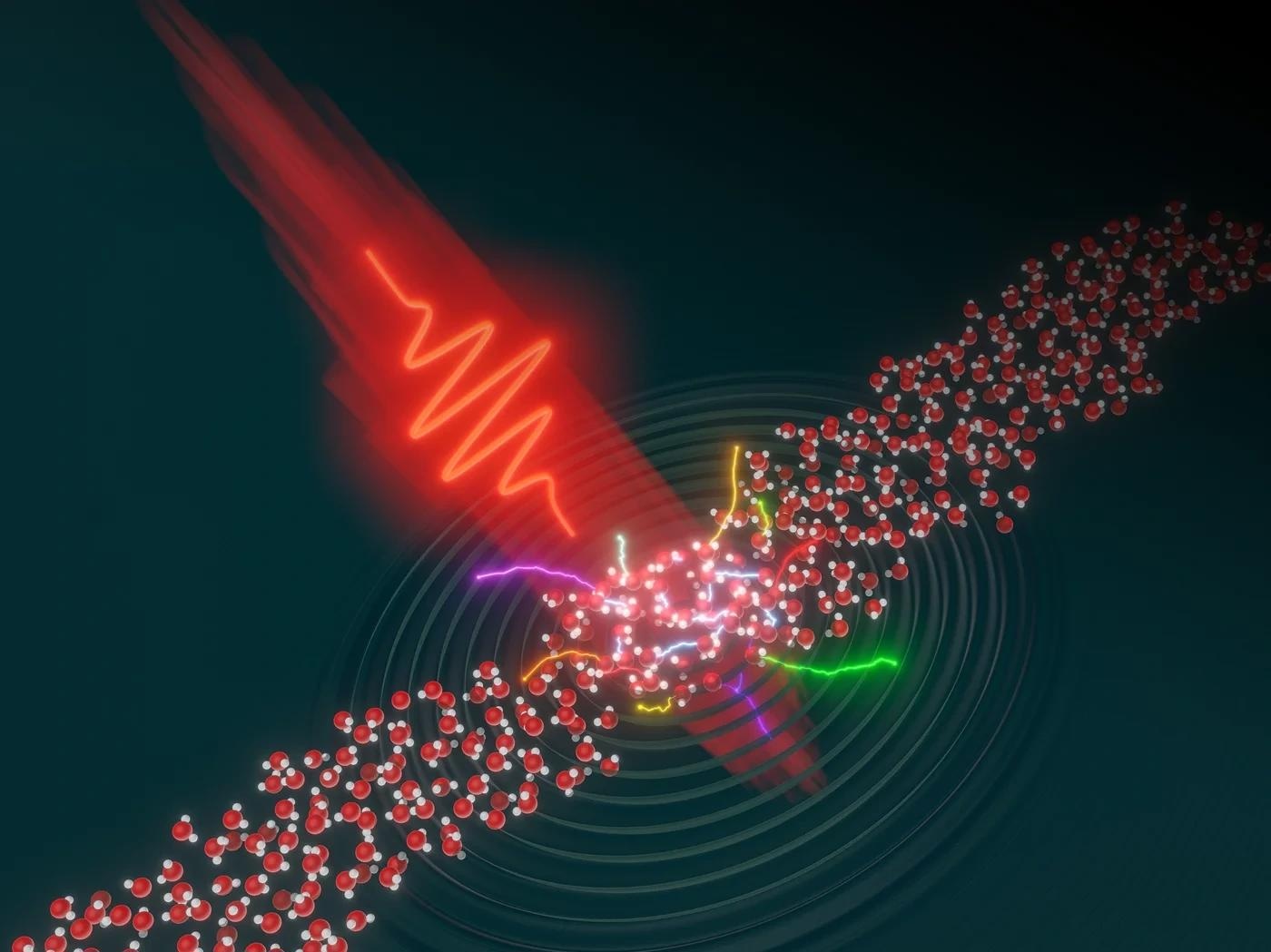The nature of electrons within liquids plays a pivotal role in governing a wide array of chemical reactions, thereby influencing crucial processes within organisms and the global ecosystem.

An intense laser pulse (in red) hits a flow of water molecules, inducing ultrafast dynamics of the electrons in the liquid. Image Credit: Joerg M. Harms / MPSD
However, observing the motion of electrons presents a formidable challenge as it unfolds within attoseconds, which are equivalent to quintillionths of a second. With the advent of advanced lasers capable of operating at these ultrafast timescales, scientists can now catch glimpses of these rapid processes using various techniques.
A collaborative team of researchers from the Max Planck Institute for the Structure and Dynamics of Matter (MPSD) in Hamburg and ETH Zurich has recently showcased the feasibility of investigating electron dynamics in liquids through the use of intense laser fields.
Also, they have successfully determined the electron mean free path, which represents the average distance an electron can travel before colliding with another particle.
Their investigation revealed a distinct mechanism governing the emission of a specific light spectrum, known as the high-harmonic spectrum, in liquids compared to other states of matter like gases and solids. These findings provide a gateway to gaining deeper insights into the ultrafast dynamics occurring within liquids.
The widespread technique of employing intense laser fields to produce high-energy photons, known as high-harmonic generation (HHG), is routinely utilized in various scientific domains. This method is employed, for instance, to investigate electronic motion in materials and to monitor chemical reactions over time.
Although HHG has been extensively examined in gases and, more recently, in crystals, there has been a notable lack of knowledge regarding this phenomenon in liquids. In a recent publication in Nature Physics, the Swiss-German research team detailed their exploration of the distinctive behavior of liquids when exposed to intense lasers.
This marks a significant gap in our understanding, particularly in contrast to the recent scientific advancements made in understanding how solids respond to irradiation.
To address this gap, the experimental team at ETH Zurich designed a specialized apparatus specifically for studying the interaction between liquids and intense lasers.
In their research, the scientists unveiled an intriguing characteristic: the maximum photon energy generated through HHG in liquids remains unaffected by the laser's wavelength. This finding prompts the question of which factor is responsible for determining this upper energy limit.
This is the query that the MPSD Theory group embarked on a mission to resolve. Significantly, the researchers in Hamburg made a groundbreaking discovery by unearthing a connection that had previously eluded detection.
The distance an electron can travel in the liquid before colliding with another particle is the crucial factor which imposes a ceiling on the photon energy. We were able to retrieve this quantity – known as the effective electron mean free path – from the experimental data thanks to a specifically developed analytical model which accounts for the scattering of the electrons.
Nicolas Tancogne-Dejean, Study Co-Author and Researcher, Max Planck Institute for the Structure and Dynamics of Matter
Through their integration of experimental and theoretical findings in their investigation of HHG in liquids, the scientists achieved two significant milestones. Not only did they successfully identify the critical factor determining the maximum photon energy, but they also executed the inaugural high-harmonic spectroscopy experiment within a liquid context.
Within the scope of this study, which primarily examined the low kinetic energy region, quantifying the effective mean free path of electrons posed a formidable challenge.
Hence, the collaborative efforts of the ETH Zurich / MPSD team have established HHG as a novel spectroscopic tool for probing liquids. This accomplishment stands as a noteworthy milestone in the ongoing endeavor to fathom the intricacies of electron dynamics within liquids.